Macchi C.202 Folgore

Italeri, 1/32 scale
S
u m m a r y : |
Description and Item No.: |
Italeri Kit No. 2518 - Macchi C.202 Folgore |
Contents and Media: |
211 parts in grey plastic (including four not used); seven parts in clear plastic (including one not used); 3d printed instrument panel (five parts); one brass photo-etched fret with 162 parts; length of white vinyl tube; length of black vinyl tube; length of fine wire; two decal sheets covering eight subjects and individual smoke rings. |
Price: |
£115.00 (£95.83 Export) plus postage from Hannants |
Scale: |
1/32 |
Review Type: |
First Look |
Advantages: |
High level of detail; understated surface textures; high quality photo-etched and 3d printed instrument panel upgrades; highly detailed engine that may be displayed; includes big decal sheet with smoke ring camouflage. |
Disadvantages: |
A number of prominent ejector pin circles that will need attention; problematic construction sequence with undercarriage legs needing to be installed early in the build; heavily bulged and flattened tyres won't be to everyone's taste; small photo-etched parts will need some patience and experience. |
Recommendation: |
This is Italeri's first foray into 1/32 scale WWII fighters and they have done an admirable job.
The model sits somewhere between Revell's relatively straightforward all-plastic 1/32 scale offerings and Tamiya's uber-kits.
Cockpit and engine are highly detailed. Surface textures are subdued - mainly panel lines and thankfully not festooned with rivets. They provide an appropriate canvas for the eight striking camouflage schemes.
The inclusion of 162 photo-etched parts is a mixed blessing. I am sure that I will be leaving many of the smaller parts on the fret, but it is nice to have the option included in the box.
The decals are perfectly printed. The individually numbered smoke rings are a major selling point and the 3d instrument panel looks great.
I am uneasy about the requirement to fix the undercarriage so early in construction. You'll need to take lots of care to avoid damaging or breaking the undercarriage legs off.
At £115.00 it's not cheap - it is nudging the price of Tamiya's 1/32 scale WWII fighters -but value will be in the eye of the beholder.
Apart from that, and a number of ejector pin blemishes, this is a lovely kit that will deliver an impressive result.
I really hope that we will see a Macchi C.205 from Italeri in this scale too! |
Reviewed by Brett Green

The Macchi C.202 Folgore (Italian "thunderbolt") was a World War II fighter aircraft built by Macchi Aeronautica and operated mainly by the Regia Aeronautica (RA; Royal (Italian) Air Force). Macchi aircraft designed by Mario Castoldi received the "C" letter in their model designation, hence the Folgore is referred to as the C.202 or MC.202. The C.202 was a development of the earlier C.200 Saetta, with an Italian-built version of the Daimler-Benz DB 601Aa engine and a redesigned, more streamlined fuselage. Considered to be one of the best wartime fighters to serve in large numbers with the Regia Aeronautica, the Folgore operated on all fronts in which Italy was involved.

The Folgore went into service with the Regia Aeronautica in July 1941 and immediately proved to be an effective and deadly dogfighter. The Australian ace Clive Caldwell, who fought a wide variety of German, Italian and Japanese fighters during 1941–45, later stated that the C.202 was "one of the best and most undervalued of fighters". The C.202 also had its defects: like its predecessor, the Macchi C.200, it could enter a dangerous spin. It was insufficiently armed, with just two machine guns that easily jammed. The radios were unreliable, forcing the pilots to communicate by waggling wings. The oxygen system was inefficient, causing up to 50/60 per cent of the pilots to break off missions, sometimes even causing fatal accidents.*
Macchi C.202 and C.205 in 1/32 scale
Pacific Coast Models released 1/32 scale Macchi C.202 and C.205 kits in the mid 2000s.
These were limited run plastic kits enhanced with a significant resin and photo-etch in the cockpit and wheel wells.
The kits were well received upon release and a number of very nice builds may be seen on HyperScale.
21st Century Toys, best known for its line of pre-assembled and pre-painted aircraft models, also released a 1/32 scale Macchi C.202 and a C.205 in 2007. These were initially offered at prices as low as USD$10 each.
21st Century Toys' kits lacked the detail and finesse of their contemporary 1/32 scale models, and they also suffered from prominent plugs in the wings and the fuselage that covered metal screws, but they were great for beginners and a determined experienced modeller could get a good result with some extra work too.
Sadly, 21st Century Toys went out of business not long after the Macchis' release.
Italeri has now entered the fray with their brand new 1/32 scale Macchi C.202.
This is a mainly plastic kit but significant multimedia content is included.
The kit is packed in a large carboard box with a separate lid. Contents are 211 parts in grey plastic (including four not used), seven parts in clear plastic (including one not used), a 3d printed instrument panel (five parts), one brass photo-etched fret with 162 parts, one length of white vinyl tube, one length of black vinyl tube one length of fine wire, two decal sheets covering eight subjects and individual smoke rings.
I like the plastic very much. It is a medium grey colour and smooth to the touch. It appears to be neither too soft nor too brittle. Goldilocks would be delighted.
Surface textures are subdued. They are limited to major panel lines and a few rows of rivets to compliment these.

The surface features are recessed. They are not the finest that I have seen, but they are certainly acceptable and should look good under a coat of paint. Fasteners, vents, scoops and other structural features are also represented.
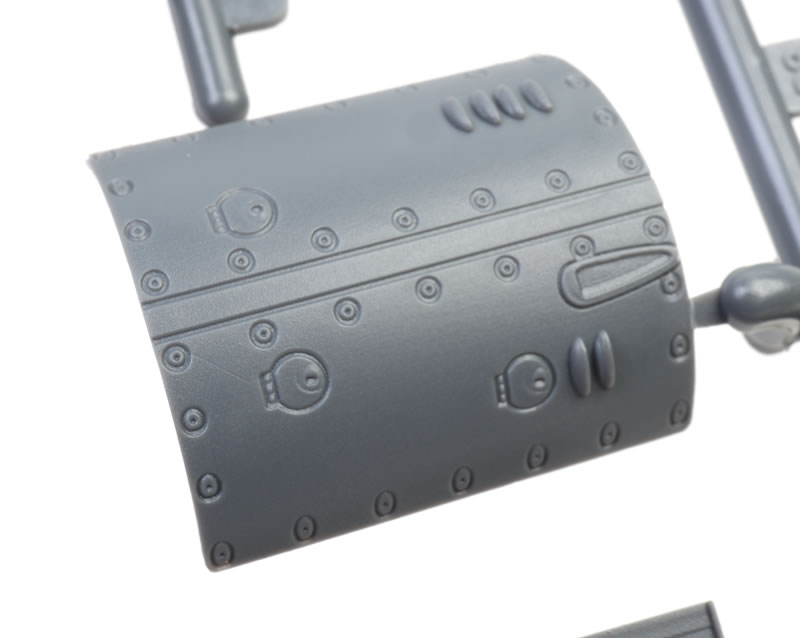
There are a few prominent ejector pin marks that will have to be dealt with, in particular the wheel wells, undercarriage leg covers and inside of the flaps.
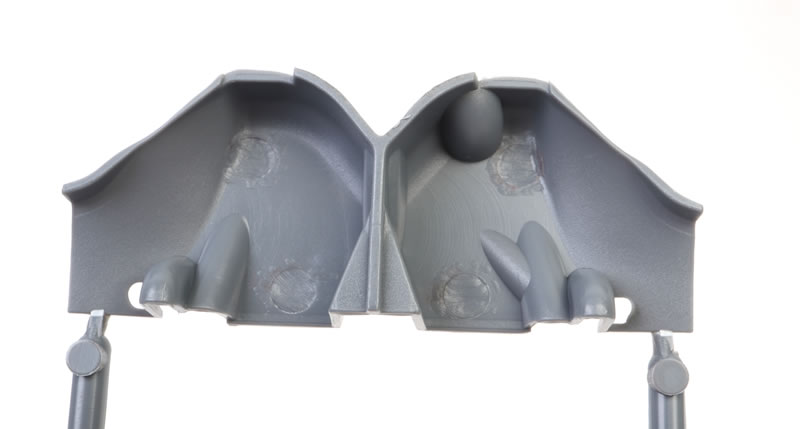
Construction commences with a highly detailed 34 part engine.

This is further enhanced with fine metal wire and vinyl tube.

Another twelve plastic parts are added in the form of individual hollowed-out exhaust stacks.

The firewall doubles as a wing spar to ensure the correct dihedral.
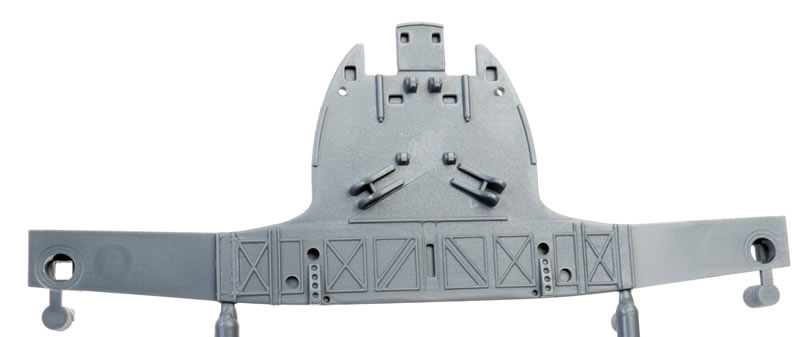
Main wheels and the tail wheel are all-plastic (hooray). They are heavily flattened and bulged, which may not be to everyone's taste. I am sure that we will see after-market wheel options appearing very soon.
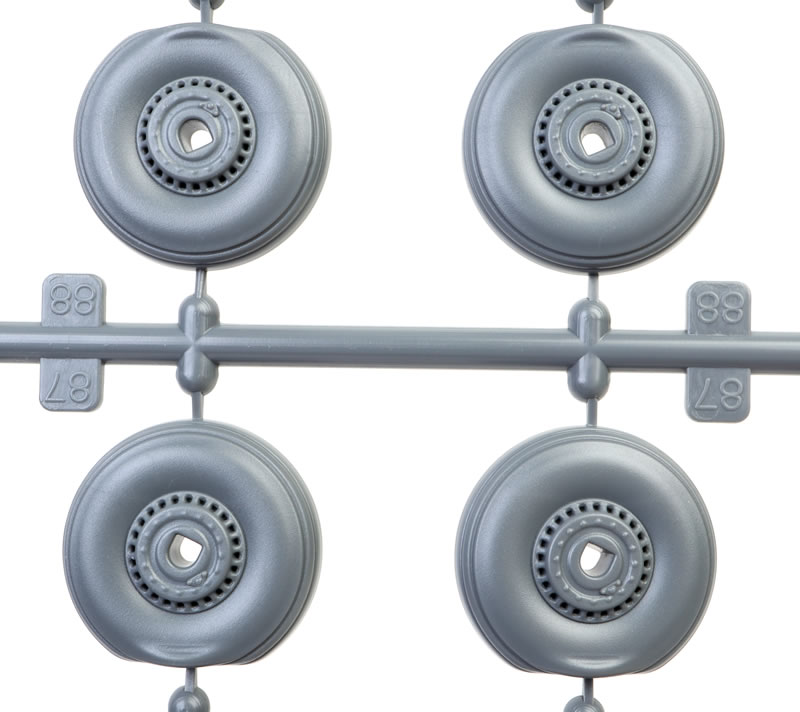
The undercarriage legs must be attached to the firewall via the lower wing at this early stage of construction. I think this is a terrible idea, as there will be countless opportunities to break off the legs during the remainder of construction and all of the painting phase.
I can't really see any safer alternative that will allow you to add the legs after assembly and painting, which would be my preference.
However, you are offered the option to build the landing gear retracted by omitting the legs and wheels, and gluing the undercarriage doors shut.

There are some other unconventional breakdowns of sub-assemblies, including the engine attached to the lower wing before work starts on the fuselage.
We don't actually start work in the cockpit until Step 17.
The cockpit is highly detailed with plastic and photo-etched parts. Sidewalls are separate parts with structural detail moulded in place (watch out for the ejector pin marks though). With careful painting, the result should be stunning.
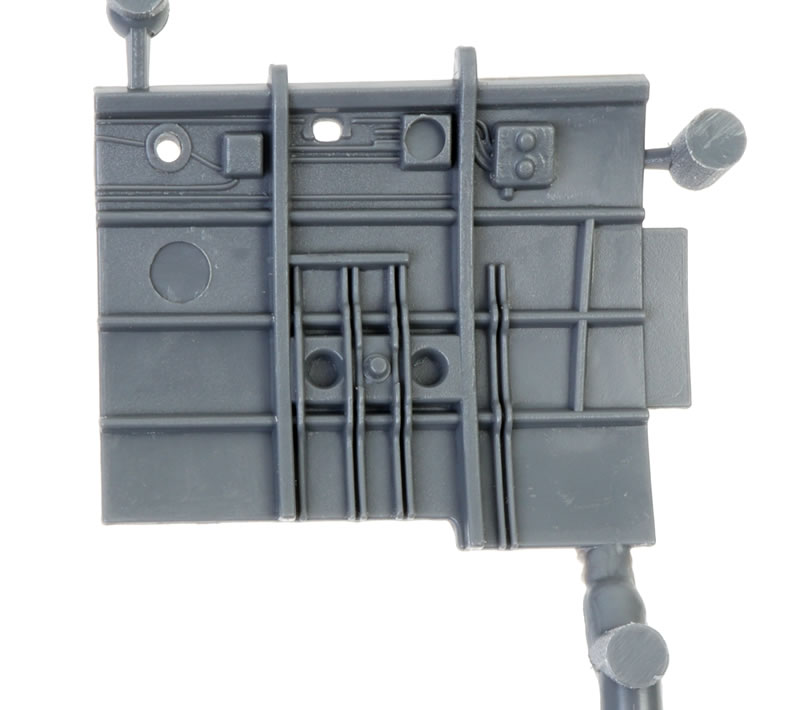
The 3d printed five-part instrument panel looks great and will be very easy to apply.

The seat is fitted with the typical Italian fighter harness - three straps and a chain that looks like an inplement of torture! The shoulder straps are moulded onto the separate backrest, while the chain, lower strap and upper shoulder strap attachments are photo-etched parts.

The large photo-etched fret adds plenty of detail for the intake and outlet mesh, the undercarriage legs, bays, exterior and interior. In total, 162 photo-etched parts are included.
The upper engine cowl is made up from six pieces. The instructions imply that you shoukld be able to place the assembled cowl over the engine. Test fit thoroughly!
For the gun cowl, we are offered the choice of closed, open or partially open. If the cowl is posed open, a photo-etched frame is used.
Early and late-style ailerons are supplied, although only the late version is applicable to all eight marking options in the box.
Control surfaces are separate and may be posed to taste. Fabric is represented by raised strips and in some cases stitching too.

Flaps may be fixed in the dropped position too.

The photo-etched fret provides six tiny mass balances for the undersides of the ailerons, and six tiny tabs for the upper surfaces of the ailerons.
The canopy is supplied in two parts that may be posed open or closed. Gunsight lens and navigation lights are also attached to the clear sprue.
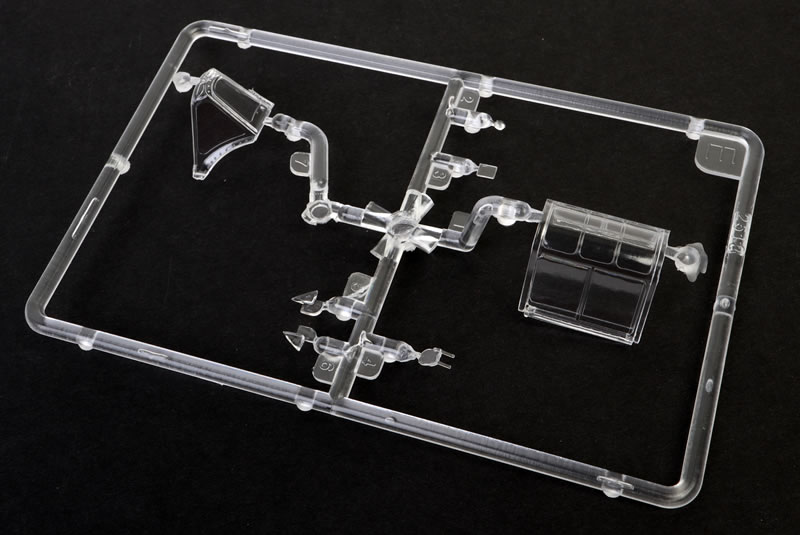
Photo-etched parts are supplied for the mirror and canopy's sliding handles too.
Markings
Markings are provided for eight machines with typically wild Italian camouflage and markings.
Two decal sheets are included, both printed perfectly by Cartograf.

Five of the schemes feature the unique Italian smoke ring camouflage. One of the large decal sheets is dedicated to this complex scheme, with individually printed and numnbered rings.
The rings appear to be a light-medium blue colour on the sheet but I suspect that these have been printed translucent to allow a soft-edged finish. The base Dark Yellow camouflage colour should transform the pale blue to green rings once the decals are applied to the model.

All the schemes are quite complex.
I think that Italeri missed a trick by not including at least one simpler green over grey finish for modellers less confident with fine mottles or individvidual smoke ring decals.
This is Italeri's first foray into 1/32 scale WWII fighters and they have done an admirable job.
The model sits somewhere between Revell's relatively straightforward all-plastic 1/32 scale offerings and Tamiya's uber-kits.
Cockpit and engine are highly detailed.
Surface textures are subdued - mainly panel lines and thankfully not festooned with rivets. They provide an authentic canvas for the eight striking camouflage schemes.
The inclusion of 162 photo-etched parts is a mixed blessing. I am sure that I will be leaving many of the smaller parts on the fret, but it is nice to have the option included in the box.
The decals are perfectly printed. The individually numbered smoke rings are a major selling point and the 3d instrument panel looks great.
I am uneasy about the requirement to fix the undercarriage so early in construction. You'll need topay plenty of attention to avoid damaging or breaking the undercarriage legs off.
At £115.00 it's not cheap - it is nudging the price of Tamiya's 1/32 scale WWII fighters -but value will be in the eye of the beholder.
Apart from that, and a number of ejector pin blemishes, this is a lovely kit that will deliver an impressive result.
I really hope that we will see a Macchi C.205 from Italeri in this scale too!
* Historical summary courtesy of Wikipedia
Purchased by the reviewer from Hannants
Review Text and Images Copyright © 2023 by Brett Green
Page Created 22 August, 2023
Last updated
2 September, 2023
Back to HyperScale Main Page
Back to Reviews Page

|
Home
| What's New |
Features |
Gallery |
Reviews |
Reference |
Forum |
Search